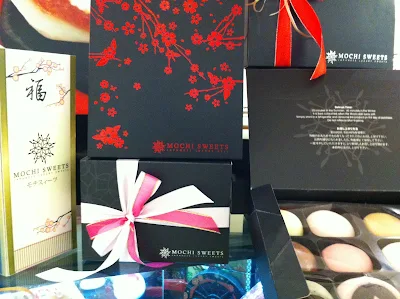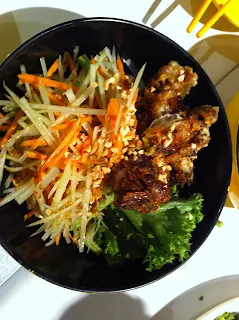Kindly Yours - A collection of writings, thoughts and images. This blog does contain third party weblinks. No AI content is used.
Tuesday, 17 July 2012
Monocle Magazine - My Fav Covers
Monocole, to me, marks a landmark moment in periodical publishing developments. Just like Reader's Digest in the mid 20th century, the concept, idea and product from Monocole fascinates, confronts and entertains my mind and mindset. Here I share with you my favourite covers from this outstanding publication, which manifests fusion, cosmopolitanism and the beauty of why not? It suggests there is another perspective on important issues, and also brings out many hidden gems and trends. Every issue can be different and surprising. At times each edition is like a compedium and collection of related things, at others it can be a one spot of contrasts and contradiction. To me, Monocole captures the essense and diversity of a wonderful world. All covers shown here are copyright of Monocole.
Sunday, 15 July 2012
Mochi Sweets, Gardens Mall - Kuala Lumpur
Premium Japanese, carefully and elegantly presented. Mochis are bite-sized sweet and savoury snacks that can contain fillings like peanut, mango yogurt, bean paste, chocolate, coffee and green tea. The outer dough is made of pounded glutinous rice and one cannot re-freeze those lovely little balls after dethawing them - there will be an impact on taste. Ideally, mochis should be eaten as soon as possible on the day of obtaining them. I noticed them at a cutely set up stall at the Gardens Mall in Kuala Lumpur. In Japan, they are consumed on festive occasions like the New Year - and has a dedicated festival named after them, the Mochitsuke.
The Mochi Sweets business I saw is a franchise from Hong Kong. To me, their appeal here looks like the equivalent of the penchant for macarons in Australia. There is even a cherry blossom flavour at Mochi Sweets - yes, they are called Sakuras! A daifuku is a specific type of mochi moulded in round shape and containing sweet tasting bean fillings only.
For the uninitiated, there may be a valid concern that once a mochi gets into the mouth, there is a risk that it may just become one blubbery and sticky ball. Not to worry, this does not happen. It is best to have them with green or smoked tea.
Mochi Sweets are also available at the Tokyo Street Market on the 6th floor of the Pavilion in Kuala Lumpur CBD, and at One Utama and Sunway Pyramid in the Klang Valley of Selangor State. Mochis are cousins to the mua chis from Fujian Province in China.. Mua chis (or in Mandarin, ma shu) started as street food with only peanut fillings - and it is interesting that they now can be sold in an upmarket form for as much as four Malaysian Ringgit.
Thursday, 12 July 2012
Canoodling,Bangsar - Kuala Lumpur
This cafe restaurant has since closed.
"Canoodling" can mean the act of consuming noodles whilst in a canoe, but the more used meaning is one of enjoying each other's company in close proximity. Benjamin Yong, of the Malaysian Big Group, must have wanted us to be with good mates and loved ones when visiting his Canoodling chain in Kuala Lumpur and the Klang Valley of Selangor. Bob and Sanei introduced me to this delightful concept restaurant, something that would go well with Sydney and Melbourne diners. I had a pleasing combination (picture above) as my mains - chicken with nasi lemak, accompanied by crackers, sambal condiment and vegetables. There are also daily specials on the board. It was lunch time on one of my holidays and I was captivated by the business model and customer service found at this restaurant. I also had a relaxing time catching up with mates I do not often meet up with.
I was bowled over by the duck kuey chap (image above), a soup traditionally with innards, but transformed to be served with duck here. I also loved the
papaya salad ala Thai (picture below by Mr Bob Lee).
Canoodling offers the best of local and fusion creations, incorporating and riding on the varied tastes from South-east Asia and with a noodles theme. It offers relatively value pricing and a good menu. Ben Yong also runs the T Forty Two at the Empire Shopping Centre, Subang Jaya; Plan B at bangsar Village One in Kuala Lumpur; and For Goodness Sake.
Open daily, the branch of Canoodling I visited in early June is located at 2F29, Second Floor, Bangsar Village II, No.1 Jalan Telawi Satu, Bangsar Baru, in Kuala Lumpur. I am told to try the deep fried eggplant with spicy floss; the pasta pad thai; the creamy mango puree with pomelo fruit bits; and the red duck confit noodles on my next visit. My overall impressions of Canoodling at Bangsar are:
Atmosphere: Easy going, contemporary and innovative.
Location: Shopping centre.
Taste: Good for most dishes.
People Engagement: There was an impressive young waiter attending to us that afternoon on 5 June 2012.
Service: Prompt with a smile.
Fav Dish Experienced: Duck kuey chap.
Best Time to Visit: Anytime, open from 11am to 10pm every day.
Would I Return?: A definite yes.
Tuesday, 10 July 2012
Bankstown Bazaar - Sydney
The hype about Bankstown has been exotic, with a market atmosphere and a possible mystery. At the grassroots, these are ordinary battlers and some resourceful business people who make a living based on turnover, logistics and crowds. Maybe not unlike from where they and their families came from. Perhaps not different from financial traders, who move their wares and transactions by bytes and bytes, instead of having to heave them physically - but all have to constantly watch the flow, trends and movements.
A stroll through the markets at Chapel Street can open our eyes and minds to the culinary delights on offer in this bustling suburb. This time around, I shall focus on the small things that can bring a smile to our face or a sensational feel to our palate. I begin with the most plain and freshly produced snack - the prawn and veg roll or the goi cuon (image above), tightly wrapped, not deeply fried but eaten as a rather healthy bite. Shredded carrots, basil leaves and lettuce provide the crunchiness. Vermicelli thins fill up the rice paper wrap. Coriander and mint offer their aromatic advantage. Trimmed bean sprouts and roasted peanut pieces are optional. Chili-based and peanut dipping sauces are a must.
I am told that the pomelo, which is the largest citrus fruit, can also be found in Israel, Australia and California, despite its usual associations with South-east Asia and southern Asia. It has a unique and attractive coral-pink flesh once you pull away its outer green and protective layer. The pomelo goes well with salads, chicken and lime dishes. It is grown ideally in tropical climes and is compared most times with the grapefruit, although I prefer the pomelo for its better taste. The fruit can become yellow as it ripens (picture above). In the Malaysian peninsular, the fruit is linked with the town of Tambun and fondly used by the Chinese population there for the Mooncake Festival.
Both savoury and sweet at the same time, the "sweetheart" or "wife cake" (photo above) is a staple of many Asian-run bakeries all around the world. It is Cantonese in origin. The sweetness comes from the inclusion of candy mashed winter melon, mixed with glutinous rice powder and white sesame seeds. The savoury comes from pork lard shortening, almond paste and five spice powder. In contrast, there is also a "husband cake" which primarily utilises mashed star anise as filling.
You can also find a preponderance of steamed rice flour cakes in Bankstown. The versions I found here are the Banh Bo, chewy bites that surprisingly were not overly sweet.
I was not too impressed with the layered jelly bites shown above - the coconut was mild but the jelly was under whelming. I preferred the ingredients below, gathered to help make a salad with smoked salmon - these include the flesh of the pomelo, cuts of Italian tomatoes and bean sprouts.
To wind up the walk about in Bankstown, I love getting some chicken flavoured biscuits (below) that has a peppery and sesame seed tinge about them. Known to the Cantonese community as kai chai paeng, there are hard and soft versions. Do note that there is no chicken ingredient in these biscuits.
They can be addictive. Enough said!
Monday, 9 July 2012
Steamboat Sizzle - Carlingford, Sydney
Steamboat sessions are favoured in the middle of winter. In China, they are referred to "huo guo" or hot pot, and traditionally use charcoal instead of the contemporary cooking gas. Close cousins are the Lancastershire hotpot in the UK; the canh chua in Vietnam; the flower peppery Chongqing hotpot; and the shabu-shabu from Japan.
A tasty and rich stock base that has been brewed before hand sets the stage for a gathering with inner warmth and nurturing engagement, especially amongst friends and relatives. There are lots of slicing and cutting in the preparations leading up to the meal. The idea is to faciltate naturally responsive cooking in the hot soup, once the ingredients are poured into the bubbling brew!
Popular ingredients are seafood, tofu, all types of vegetables, dumplings, noodles, poached eggs, all varieties of meat and seafood balls and meat slices. The sauces accompanying each steamboat session can vary, depending on the region and climate. Chili oil, white pepper, scallion, garlic, sesame oil, vinegar, hoisin sauce and soy sauce are the usual condiments.
Vegetables are carefully chosen to add to the flavour of the soup. The gas cooker has to be turned up or down according to the nature and volume of the ingredients. I reckon the resulting texture and combinations of flavours are critical to a successful steamboat meal. There was salmon served on this occasion, its richness contrasting with lighter slices of fish.
There are restaurants that just specialise in such fare, labelling themselves from Mongolian to Thai.
Steamboats encourage conversation, participation, laughter and engagement. You cook to the exact extent that you prefer, dish out your morsel and then consume it with your choice of sauce or condiment. One of the features of having a steamboat meal is the use of a variety of cutlery and crockery - it can range from Western to classic Chinese (image below). One requires a set of things - the miniature scoop net to dish out your cooked items; soup spoons; holders for sauces and condiments; ladles and various plates placed on the table to hold the many uncooked ingredients.
Why are there two steamboat pots going along? (Image below)
The one in the background has a spicy tom yum flavour, whilst the green coloured pot held the plain version. Above, custard puffs from Ju to add sweet taste after the steamboat meal was completed. Ju mentioned the use of Thermomix in coming up with the nice pastry puffs.
The above pictures were taken at the home of Susan and Boo Ann Yap in Carlingford NSW in July 2012.
Subscribe to:
Comments (Atom)
Apparently Weird
The Seemingly Weird Things I Observe Individuals with agitated facial expressions talking loud to themselves in public - as they cleverly ...
-
The Japanese and some south east Asians believe even non animate things have a spiritual presence. I generally refer to it as a lifeforce. ...
-
In 2025, Canada, except for her province of Saskatchewan, started Daylight Savings Time (DST) on 2 March. Nearby Nuuk ( Greenland, part o...
-
There are things I should have started long ago to clear up. I am good at putting in one place unfinished tasks. Written lists of quest...






































